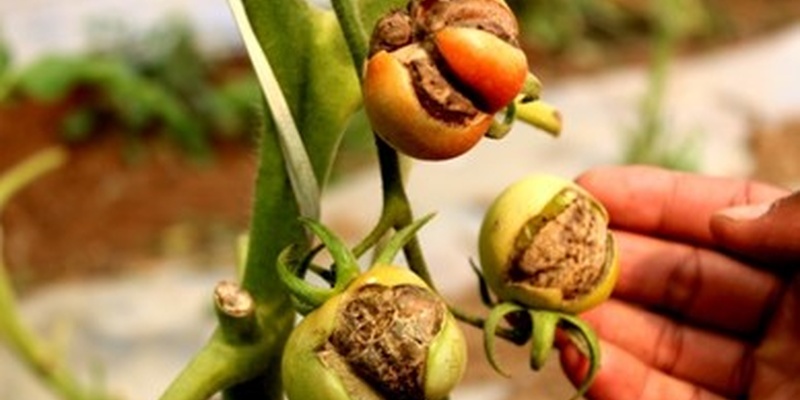SPOTLIGHT: How IPPC-led phytosanitary capacity evaluation strengthens countries’ ability to handle plant pests
Posted on Fri, 22 Dec 2023, 12:50

For centuries, plant pests have been among the biggest threats to sustainable crop production, agricultural productivity, food security and livelihoods of millions of people. Today, the pest problem is just as devastating, or even worse, thanks in part to global phenomena like climate change. Warmer temperature and erratic rainfall are forcing pest migrations to new areas and causing increase in pest populations. In Africa, pest outbreaks are increasing, with the emergence of new pests such as Fall armyworm (FAW). FAW is estimated to cause up to USD 9.4 billion in annual yield losses in Africa. To deal with FAW and other pests, that destroy agriculture and harm international trade, countries need robust, efficient, and functional phytosanitary systems, with adequate human resources to prevent and manage pests.
However, low capacity in phytosanitary and diagnostics infrastructure is one of the weaknesses of the plant health sector in Africa, as indicated in the African Union (AU)’s Plant Health Strategy for Africa. Consequently, there is limited coordination of plant health matters and phytosanitary activities at the national, regional and continental levels. AU member states and regional economic cooperation has low capacity to deal with emerging plant health challenges, particularly using modern technologies and best practices in preventing and responding to pest outbreaks.
Thanks to the coordination of the International Plant Protection Convention (IPPC) Secretariat and funding from the European Union, nine African countries have benefitted from immense technical assistance to review and upgrade their national plant health systems, by carrying out thorough Phytosanitary Capacity Evaluations (PCEs). Eswatini, Dijbouti, Kenya, Malawi, Mauritius, Rwanda, Seychelles, Zambia and Zimbabwe have reported positive outcomes since they started conducting PCEs and benefiting from technical assistance through an IPPC-led project aimed at strengthening phytosanitary capacity in Africa.
The project also draws technical expertise from the Food and Agriculture Organization of the United Nations (FAO)’s Food Systems and Food Safety Division, which has overseen the implementation of eight Food Safety Assessments. These assessments, coupled with the PCEs, have been transformational for countries in the project. The tools enable countries to identify the bottlenecks in their national phytosanitary systems and thereafter develop plans to address them and build strong, reliable plant health capacity, strengthen governance and improve strategic planning around plant health and food safety.
With adequate and reliable capacity and phytosanitary infrastructure, countries can meet their international obligations such as the national reporting obligation required by the IPPC. By reporting on the status of plant pests and plant protection, countries can improve their trade regulatory systems, widen their export potential- especially for agricultural commodities, and enhance food security.
How PCEs address phytosanitary capacity issues
Evaluating a country’s phytosanitary systems is the first step in understanding the plant health challenges and identifying how best to protect plants from pests and sustain international trade in plants and plant products. A PCE is one of the most appropriate tools for such an assessment because it produces a snapshot of a country’s phytosanitary capacity at a given time and therefore provides the basis for planning phytosanitary capacity building. A PCE comprises phytosanitary-related modules that countries can implement at different stages, to identify gaps in and opportunities for improving their national phytosanitary systems.
Countries undertake the PCE process through their national plant protection organization (NPPOs) and technical assistance from the IPPC Secretariat, through an IPPC-certified PCE facilitator.
The IPPC conducted the PCEs through a series of three workshops in each of the nine participating countries. During these workshops, plant health stakeholders, including NPPO staff, customs officers, representatives from ministries of agriculture, environment, trade, producers, importers, and academics, evaluated their country’s phytosanitary systems and mapped out gaps in their capacity and infrastructure. To identify which areas needed attention, countries could select from a menu of 13 modules, available online, on various phytosanitary topics. These topics included reviewing national phytosanitary legislation, NPPO structure and processes, pest diagnostic capacity, pest surveillance and pest reporting capacity, phytosanitary import regulatory system, pest risk analysis and export certification.
Countries can then prioritize the main issues for attention by national governments, develop strategic plans, with clear roadmaps to address the identified gaps, and design interventions based on reliable and verified information about their phytosanitary systems. One of the benefits of the PCE therefore is that it enables countries to apply a harmonized approach to identifying phytosanitary capacity challenges and making recommendations for improvement. A common approach strengthens international collaboration for plant health, improves global trade as countries follow similar processes, and increases access to more trade opportunities. Using harmonized approaches enhances adoption of the International Standards for Phytosanitary Measures (ISPMs) because countries follow harmonized procedures that ensure fair trade. With the results of a PCE, countries can also review their national budgets, ensure adequate funds allocation for phytosanitary activities or make plans to generate or raise additional financial and technical resources.
“The PCE is a vital tool for helping countries to strengthen their technical capacity and infrastructure to safeguard plant health, said Osama El-Lissy, IPPC Secretary. “With the proliferation of plant pests around the world and push factors like climate change, the IPPC strongly encourages countries to apply the PCE and make honest evaluations that will eventually protect them from the devastating effects of pests,” he added.
The PCE has been applied in over 80 countries, with numerous repeats in some countries. Presently, the IPPC Secretariat is supporting the nine African countries to conclude the last phases of their PCEs.
Related information
Website: Phytosanitary Capacity Evaluation (PCE)
Factsheet: Phytosanitary Capacity Evaluation (PCE)
Website: Phytosanitary Capacity Evaluation Strategy for 2020-2030

